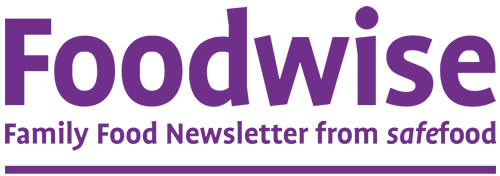Factors influencing the efficacy of food risk and dietary communications directed at young people

- Project start date: 1 May 2003
- Project status: Completed
- Project type: Communications
- Discipline: Food marketing
- Author/s: Dr Karen Trew, Queen’s University Belfast
- Collaborator/s: Dr Julie Barnett, University of Surrey, Prof Glynnis Breakwell, University of Bath, Dr Margaret Barry, National University of Ireland, Galway
Research objective
Young people (13-16 year olds) are particularly important targets for achieving behavioural and attitudinal changes with regard to food hazards and nutrition as they are agents for change in their households as well as being the next generation of adult consumers.
The objectives of this project were to assess the extent to which 13-16 year olds understand the nature and range of key food related hazards and to identify any significant gaps in their basic knowledge of these hazards.
Relationships between perceptions, intentions and behaviour were investigated together with the key sources of influence on their perceptions of food risk.
Outputs
Research report
- Title: Young People and Food: Adolescent Dietary Beliefs and Understandings
- Date: 13 October 2005
- Summary: This research provides fresh insight into the dichotomy between young people's knowledge of food safety and nutrition, and their behaviour.
- Findings:
-
Young people’s diets vary by gender, income, and region: girls and those from more affluent families report healthier diets, and adolescents in the Republic of Ireland report healthier diets than those in Northern Ireland.
-
Most adolescents know what a healthy diet should look like, but this knowledge does not always lead to healthier eating.
-
Food choices are often driven by taste, with many young people viewing tasty foods as “bad” and healthy foods as “bland.”
-
Concerns about body image, especially among girls, can lead to food choices based on weight control rather than nutrition.
-
Adolescents’ views of food are strongly influenced by peers, parents, and personal experience, not just expert advice.
-
They are active interpreters of information, judging messages based on the source and how it fits with what they already believe.
-
They see natural risks (like sugar and fat) as more relevant than artificial ones (like additives).
-
- Recommendations:
-
Treat adolescents as a distinct group with their own concerns and motivations, not just as “young adults.”
-
Target communication at the groups most at risk of poor diets.
-
Go beyond education alone: link messages to everyday life, self-image, and the types of eaters young people see themselves as.
-
Avoid focusing only on the dangers of obesity, which may backfire, especially for girls; instead, highlight the positive outcomes of healthy eating.
-
Challenge oversimplified ideas of food as either “good” or “bad,” and show how balance matters.
-
Make communications engaging, credible, and relevant to young people’s real experiences and social context.
-




